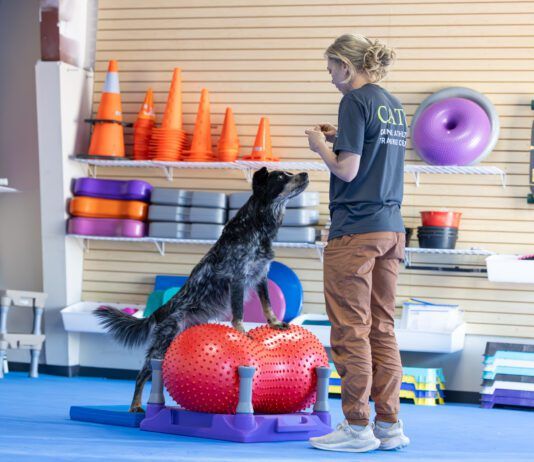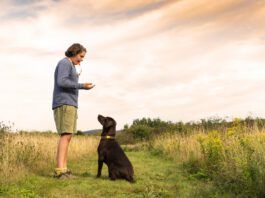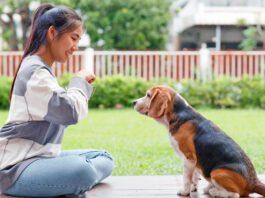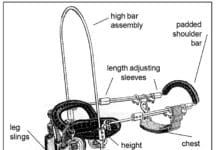Properly Crate Training Your Dog
Crates are perhaps second only to choke collars as the most misused training equipment forced upon dogs. However, unlike choke collars, there is a terrific training principle behind the use of crates. A crate, or, in other words, short-term close confinement, can be used to help dogs teach themselves two very important skills. The first is eliminating only when and where it is appropriate. The second skill is keeping out of trouble behaving appropriately in the house. Without these two skills, a dog doesn't have much of a chance in this world.
Choosing the Right Dog Trainer
Dog training classes vary widely in style and quality of instruction. It is important to do research and make an informed choice before selecting a trainer. Before putting your dog’s future in a trainer’s hands, we recommend that you ask a lot of questions. First, though, you have to decide what you want from a training class. Class styles vary, with the two primary approaches being the military-style precision training traditionally used for showing in the obedience ring, and family dog classes that are more concerned with teaching canine good manners and social skills.
Dog Training Videos Offer Tips!
We dog training enthusiasts are lucky; there are any number of information resources available to help us learn about our favorite preoccupation. First-hand learners can go to a class, or work with a trainer in private sessions. Readers can choose from a bewildering array of books. For the computer-phile, there are even a few CD-ROMs that offer dog training tips! But videos are absolutely one of the easiest mediums to learn from. Like classes and private training, videos have the benefit of being a visual medium, but with an advantage – you can play them over and over until a concept really sinks in.
Caring For Paraplegic Dogs
Nita was a standout among her littermates, clearly the most vivacious of a lively bunch. Her owner, Lyn Dodd, still chuckles at the thought of her favorite dog, a happy companion in her customary shotgun seat, riding around in Dodd's pickup truck. It wasn't until Nita was 14 1/2 years old that she began having health problems. One day I noticed that Nita was sitting in an odd way. Her hind leg looked funny the way it sprawled out to one side
Training Other Species to Become a Better Dog Trainer
Training chickens? What an odd idea! Yet all across the country, animal owners and trainers are flocking to workshops put on by a legendary husband-and-wife team, learning how to train chickens . . . so that they may better train their dogs. Here’s my account of one such workshop, held recently in Monterey, California. It was 9 a.m., on a cool, cloudy morning in late September. Twenty-two dog trainers, hailing from all over California (and one from Illinois), were perched on the edges of our chairs, waiting with nervous anticipation for the workshop to begin.
Best Dog Training and Care Equipment
Each issue, Whole Dog Journal brings you reviews of dog products we have tested on real dogs and dog lovers. As 1998 rapidly draws to a close, we’re looking back at the year’s best bets and a couple of great new ones, to help you decide which products you might want to add to your holiday shopping list for your dogs and your dog-loving friends.
Getting Beyond the Basics of Dog Training
Not so very long ago, trainers assumed that anyone who signed up for a basic obedience class was seeking that perfectly straight, sit-in-perfect-heel position. Classes were conducted with military precision, trainers barking commands as owners marched their dogs in a circle, jerking and popping on leashes and choke chains in order to achieve lightning-fast responses. Success was measured by speed and perfection of position, and advanced work was conducted with one goal – to show in American Kennel Club obedience competitions, earn obedience degrees, and achieve scores as close to that magic “perfect 200” as possible.
How to Find The Best Dog Training Videos
Videos are becoming an increasingly useful tool for dog owners who want to learn more about dog training. Of course, moving pictures will never replace a talented, real, live, positive dog trainer who can give you immediate feedback about your own training efforts with your dog. But videos can be a helpful component of your training program and an excellent way to expand your knowledge, especially if there are no good trainers within a reasonable driving distance of your home.
Teaching Fetch Using Positive Reinforcement Techniques
Who has not watched in awe as a Border Collie at a local park sails through the air, snatches a FrisbeeTM in mid-flight and dashes back to her owner, dropping the Frisbee and waiting in eager anticipation for the next throw? Playing fetch with your dog is fun. It’s also a great way to strengthen the dog/human bond, satisfy your dog’s prey/chase instincts, and provide enough exercise to work off that excess energy that can make him a challenge to live with. A formal retrieve is also required for upper levels of obedience competition.
Teaching Fetch and The Best Fetch Toys
There is no such thing as the one best fetch toy. The best fetch object is something that your dog really likes. So when Whole Dog Journal asked me to review fetch toys, I was at a little bit of a loss. For one thing, if you walk into a large pet supply store or look in a catalog there are a bazillion choices – from various flying discs to flavored tennis balls to bumpers to squeaky toys. There’s no way I could review them all. For another, my test dogs’ favorite fetch toys may well be very different from your dog’s favorite fetch toy.
Is Your Dog Hiding a Talent?
All of our dogs are capable of far more than we ever ask of them. Their senses, especially their hearing and ability to smell, are so highly developed that they can perform feats that appear miraculous to us. Their physical abilities can cause us to gape in awe, as demonstrated by the prowess of highly-skilled Frisbee and Agility dogs. And they have all kinds of talents that, unless we look for them, we may never notice; hidden talents that reveal their versatility and breadth of their potential to think, reason and learn.
Kinder Than A Monk?
What images do you see in your mind when you hear the word “monastery”? Most people envision rustic wooden buildings, with gentle, somber, bearded men in flowing brown robes and leather sandals quietly treading gravel pathways that wind through peaceful forests. This could be an accurate description of the New Skete Monastery in Cambridge, New York, with just one glaring omission. At New Skete, the monks are accompanied by dogs. For more than 30 years, the monks of New Skete have bred, trained and sold German Shepherds as part of their monastic life.











